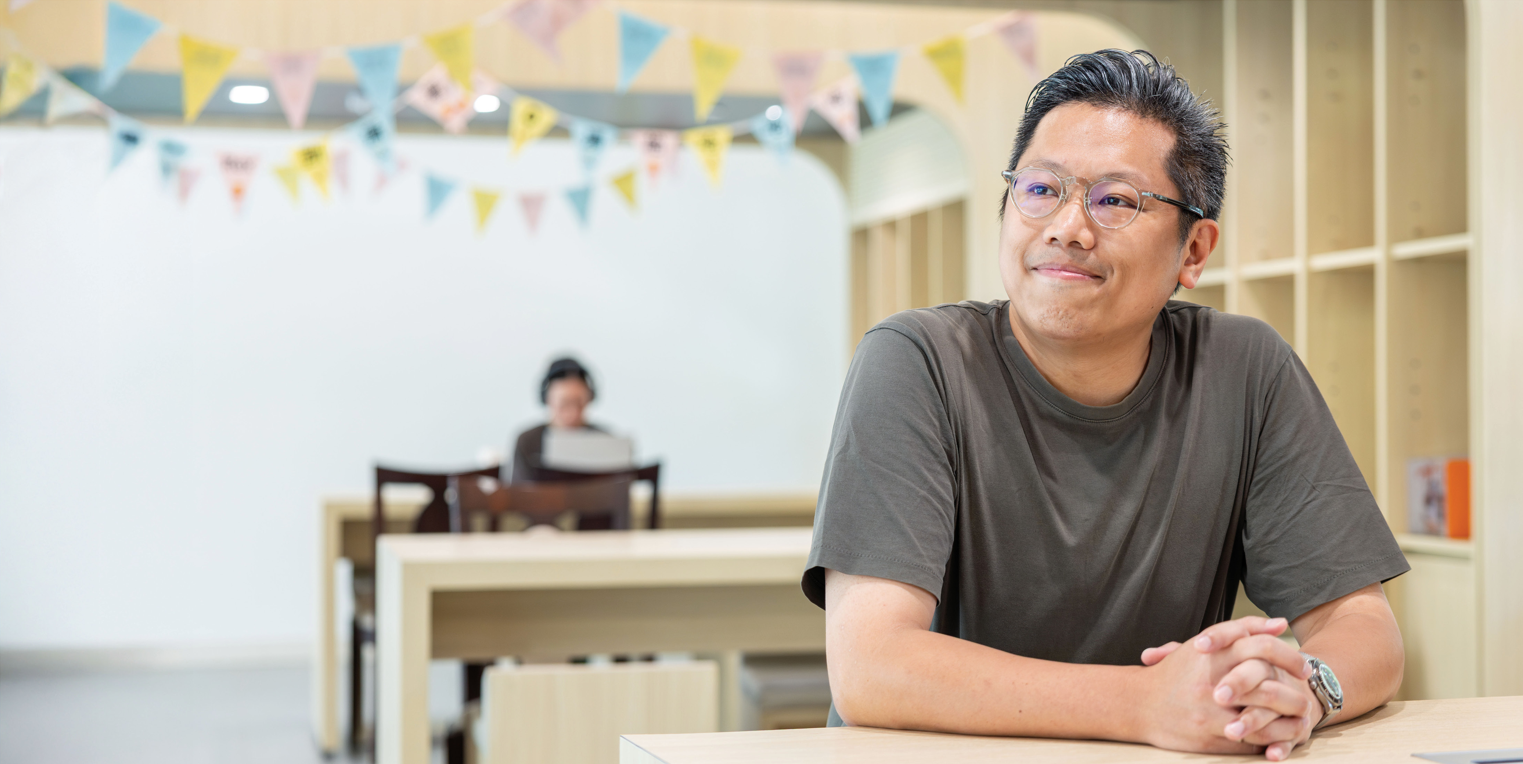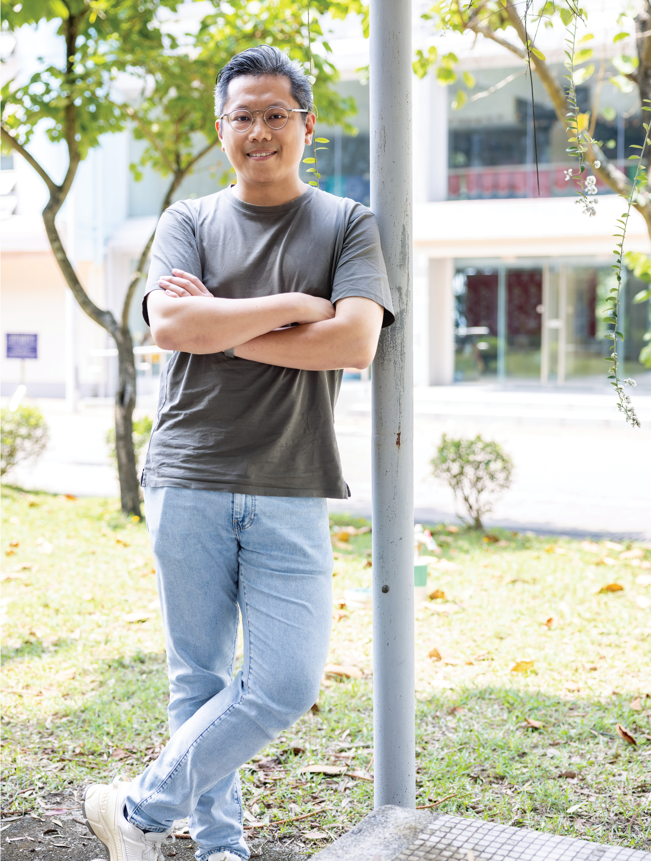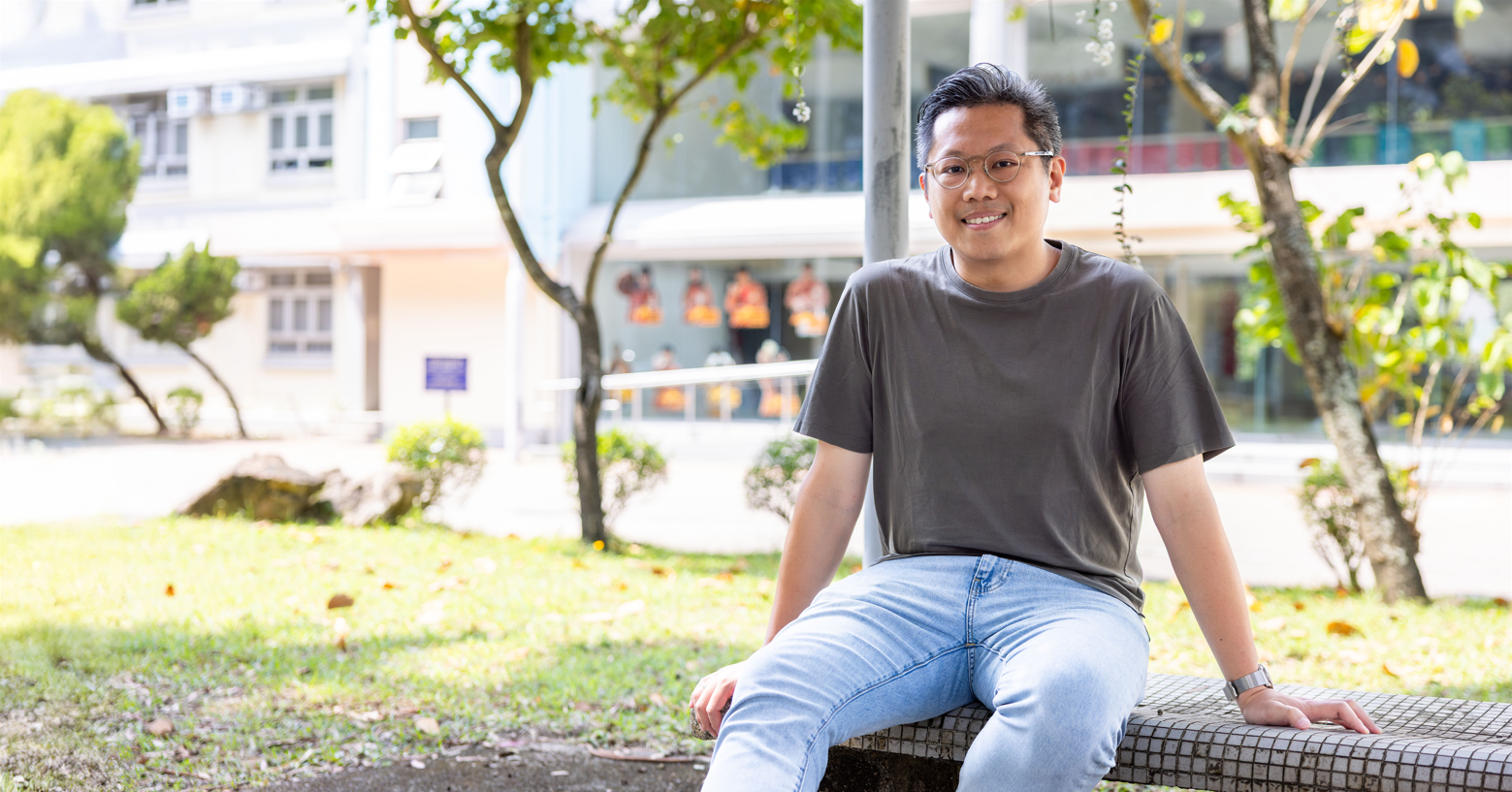

Professor Mo Kar Him is a true-born CU architecture enthusiast, having been at CUHK throughout his journey in the academic field. Even now, he has taken a position in Chung Chi that best utilises his area of expertise, within the Student Hostels Committee (SHC). His architectural ambitions began in high school. It was inspired not by masterful professionals, but a drafting tube.

“The TV was playing Love Generation at the time, starring Kimura Takuya as a designer. The way he chased his dream with a drafting tube on his back touched me.” Professor Mo mentioned that he has enjoyed arts and design since Form 4, finding them cool and interesting. He chose to study in architecture, however, not just for the drafting tube, but a purpose.
Architecture projects have service targets, so the work does not depend solely on personal interests. “When people talk about architecture, they focus on appearance. Yet, architecture is different from visual arts. While aesthetics is considered, functionality and culture are equally as important, such as the day-to-day of users, since different groups in a community would make use of the architecture.” Professor Mo then revealed that he has a strong sense of community. Before attending university, he had been living in Sai Ying Pun since he was an infant. The area had no metro system at the time and was full of old-time charm. “There are so many interesting things that go on in the community, some of them are related to architecture, like my high school, Raimondi College. It is 14 stories tall and the tallest secondary school in Hong Kong.” His love for the community became the driving force behind his decision to study architecture, which was later reflected in his teaching and community projects.
From Avant-Garde America to Humanistic CUHK
Professor Mo Kar Him pursued both his undergraduate and postgraduate studies at CUHK’s School of Architecture, but his “initial exploration of architecture” took place in the United States. Professor Mo recalled that in his final year of high school, he took a break from his studies to attend the Southern California Institute of Architecture (SCI-Arc), a school exclusively dedicated to architecture-related programmes.
“The campus was converted from an old airplane hangar, and everything done there was avant-garde—things most people would consider eccentric. Imagine, more than 20 years ago, the school was already using robots to create full-scale mockups of architectural designs. At the time, I thought the school was just ‘so cool,’” he said with a smile.
To ease his family’s financial burden, Professor Mo decided not to stay in the United States and returned to Hong Kong to study at CUHK. He pointed out that CUHK’s School of Architecture is fundamentally different from SCI-Arc: “SCI-Arc focuses on robotics and technology-driven projects, whereas CUHK’s School of Architecture belongs to the Faculty of Social Sciences, placing greater emphasis on community design and humanistic care. Many of my classmates’ theses were related to the community. I think this is because CUHK’s rich humanistic atmosphere deeply influences students.”
Professor Mo himself was one of those influenced. From being an undergraduate student to a postgraduate and now a teacher, he has been connected to CUHK for 20 years. “I love CUHK; it has become my home. My memories and sense of belonging are all here, and I’m willing to dedicate my time and life to this place,” he said.
Transforming Space for Madam S. H. Ho Hall
The School of Architecture was originally located in the Wong Foo Yuan Building before moving to its current location in the Lee Shau Kee Architecture Building, which is still situated in Chung Chi College. Because of this, Professor Mo thought that serving Chung Chi felt like a natural progression. “After all, I’ve always been active within the Chung Chi, so serving here feels easier!”
Why did he choose to serve on the Student Hostels Committee? Professor Mo explained that it aligns with his research expertise. “My research focuses on housing and community design. Chung Chi has a large cluster of student hostels, and the Student Hostels Committee is composed of wardens, college representatives, student representatives, and hostel residents. This makes it an ideal setting to form a close-knit community. Simply having a platform like the Student Hostels Committee that accommodates so many stakeholders is something that isn’t easy to achieve, even in broader society”.
Professor Mo began serving on the Student Hostels Committee in 2019 and assumed the position of Chair in the 2023/24 academic year. His priority as Chair was to facilitate the renovation of Madam S. H. Ho Hall. “The last large-scale renovation of Madam S. H. Ho Hall was more than 20 years ago. So, I thought it was a great opportunity to use design to introduce new functions and fresh aesthetics to the hall. We even hope to leverage the design outcomes to connect with alumni and invite them to contribute to Chung Chi, creating a home for the Chung Chi community,” he said.
He further explained that the direction for the renovation of Madam S. H. Ho Hall was to start with the residents’ experience and college life, allowing students’ activities to be reflected in the design. “For example, modular furniture was introduced in the lobby, which can be rearranged into platforms or tatami mats. As for the ground-floor common area, which was previously dimly lit and only had two sofas, it was renovated into a well-lit space with tables and chairs for residents to gather or study, creating a social space.”
As for the redesign of the pantries on each floor, it exemplifies a balance in design. Although the original open layout was removed to reduce the loss of cooled air and prevent cooking odors from seeping into the rooms, semi-glass walls were used to maintain a sense of transparency, attracting students passing by to linger and fostering a sense of community in the hall.
“In the past, Madam S. H. Ho Hall was indeed ‘fully functional’ and more pragmatic, but it lacked sufficient consideration for the residents’ experience. With societal progress, everyone has higher expectations for their living environment, and hostel residents are no exception. I hope that, as the Chair of the Student Hostels Committee, I can contribute to improving the hostel environment,” he said.

Professor Mo explained that the direction for the renovation of Madam S. H. Ho Hall was to start with the residents’ experience and college life, allowing students’ activities to be reflected in the design.
Appreciating the Architectural Characteristics of Chung Chi
Since Chung Chi is considered home for its members, what are the architectural characteristics of Chung Chi? Professor Mo first pointed to its integration with nature. “This is something we can easily observe, such as the well-known Lake Ad Excellentiam.” He also mentioned that many of the older buildings in Chung Chi adopt passive design features, such as covered walkways and thicker walls, to achieve natural ventilation, lighting, and temperature reduction. “Even newer buildings, such as the Kunkle Student Centre, use potential development spaces to create massive ventilation corridors. These all reflect how Chung Chi values the relationship between architecture and nature.”
Another characteristic comes from its historical elements, with one of the most notable examples being the rubble walls and breeze blocks. These combine modernist (Modernism) elements with local design features. The Chapel, as well as the students hostels Hua Lien Tang and Ying Lin Tang, are representative examples of this architectural style at Chung Chi.
Professor Mo emphasised that balancing development and conservation is undoubtedly challenging. However, while expanding, Chung Chi strives to preserve its history. “Even in Chung Chi’s latest development project, Project E, we insisted on incorporating elements such as rubble walls and breeze blocks into the design of the new building. This ensures that Chung Chi’s character is carried forward in architectural projects, preserving its memories,” he said.

Professor Mo emphasised that balancing development and conservation is challenging, but Chung Chi strives to preserve its history while expanding.
Social Enterprise Experience Leading to Service-Learning
During the interview, Professor Mo repeatedly emphasised that architectural design should be people-centered, and he practices what he preaches. In addition to his teaching work at CUHK, he co-founded the non-profit research platform “Happy Ageing Lab.” Through participatory design research, interdisciplinary collaboration, and evidence-based consultancy, the lab advocates for age-friendly communities.
“When my grandmother had a stroke, her mobility was greatly reduced, but she refused to stay in her room because she felt lonely and feared being abandoned. She would rather sleep in the living room,” he explained. He noted that similar situations are not uncommon in communities, and issues like these cannot be resolved simply by renovating buildings.
“The Happy Ageing Lab aims to build more inclusive communities to support the elderly. We collaborate with the government, public institutions, and private developers to design housing models that promote intergenerational integration and aging in place. For example, our project at City One Shatin’s Hou2 Living Gallery was our first grassroots initiative to improve a private housing estate for age-friendliness from the bottom up,” he said.
Last year, the Happy Ageing Lab also participated in Chung Chi’s service-learning programme. Professor Mo explained that they organised two activities. In one activity, students were sent to City One Shatin to conduct a Place Audit, “we provided students with a checklist to investigate and document the age-friendliness of the housing estate. This work is crucial for improving housing estate designs and developing related innovations.”
In the other activity, students were assigned to the Happy Ageing Lab to assist in designing educational materials and creating case handbooks to promote the concept of age-friendly communities. “The participating students were all first-year undergraduates from diverse academic backgrounds. They were unfamiliar with the concepts of age-friendliness and community design, but precisely because of this, they were more easily inspired,” he said.
Professor Mo admitted that the lab’s work is not profit-driven. His goal in participating in the service-learning programme is to inspire students through his personal experiences and work. “Chung Chi education is not only about imparting knowledge but also about cultivating students’ spirit of selflessness. Even after entering society, they should still be able to do things that do not seek personal gain. I believe that such contributions are a kind of cause, and the eventual effect will ultimately benefit the individual. I hope that Chung Chi students can look at the underprivileged groups in society, plan their futures around serving others, and grow into future leaders.”
.jpg)
Student Reporter Lee Yin Lok